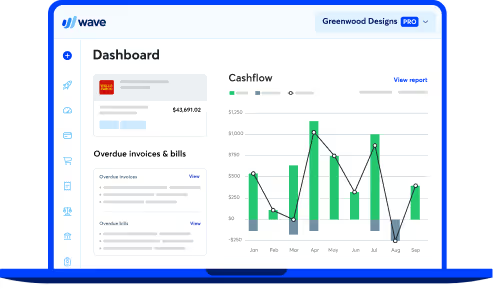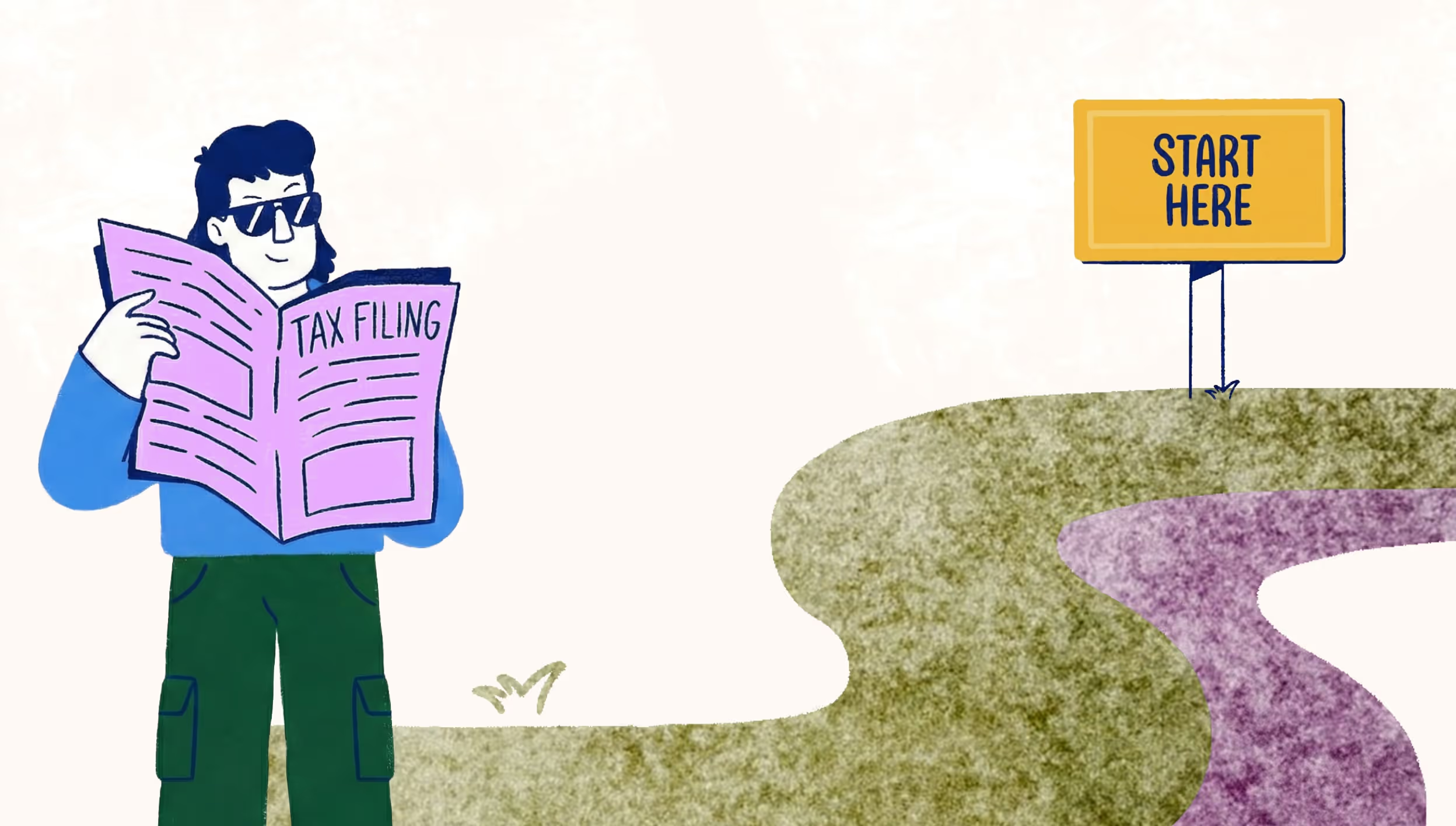
What Are ACH Bank Payments?
Unsurprisingly, offering your customers more ways to pay you results in faster payments. Fortunately, there are more payment options than ever to offer your customers, including bank payments and, more specifically, ACH bank payments.
Bank payments are the digital equivalent of paper checks. Customers can use bank payments to pay for products and services online. Instead of writing a paper check, and without needing a credit card, your customers can provide their banking information online and authorize you to securely withdraw payment straight from their banks. Thankfully, this method is just as secure as paying with a credit or debit card online, but more on that later.
Bank payments ultimately enable small business owners to receive payments faster and more conveniently, keep better track of their transactions, and even allow them to stay open for business when they’re fast asleep. Sounds intriguing? Let’s get into what bank payments and ACH transfers are, how they work, and the pros and cons.
What are ACH bank payments?
ACH is a type of electronic bank payment available in the US. ACH stands for Automated Clearing House, which is the industry standard network for handling financial transactions. ACH is governed by Nacha, the National Automated Clearing House Association. ACH payments let you directly transfer money from one bank account to another, totally electronically.
Even if you’ve never heard of ACH before, you’ve probably used it without knowing. It’s likely how your job automatically deposits your salary, or how you automatically pay your phone bill. ACH payments are usually used for recurring payments, but can also be used for one-off payments.
Key takeaways
- ACH are bank payments, but not all bank payments are ACH payments.
- You can transfer money into another account (direct deposits) or out of another account (direct payments)
- ACH bank payments are a quick, convenient, and safe way for small business owners to get paid
- ACH debit payments are great for recurring payments

How do ACH bank payments work?
Bank payments work just like paper checks, but in a faster, more secure way. Customers pay online right from your invoice, but instead of a physical check making its way from your customer’s hands to yours through snail mail, everything happens electronically via the Automated Clearing House.
Your company’s bank sends a request to the customer’s bank to have the money deposited into your account. The ACH verifies the customer’s identity and banking information and ensures the customer has enough money in their account, and then clears the money to transfer into your account.
What are ACH bank payment processing times?
The processing timeframe of ACH bank payments is 2 to 7 business days. ACH transfers are usually only processed when banks are open (AKA not on weekends or holidays) in “batches” three times a day.
When customers pay by paper check, it can sometimes be weeks before your hard-earned cash makes its way into your bank account. You lose a lot of time to snail mail and processing while your check hangs in limbo.
None of that happens with bank payments. Your customers pay you right from your invoices, and products like Wave automate the rest of the payment process so you receive your money in just a few days. The best part—no money goes missing, and there are no accidental charges.

Benefits of using ACH bank payments
Bank payments enable even easier transfers between accounts, making payments easy to send (for customers) and easy to accept (for business owners). The whole new galaxy of digital payment solutions provides more options and more flexibility than your good ol’ fashioned cash and checks.
Convenience
By accepting online payments, you’re reducing potential friction that could serve to discourage customers from making a purchase or from sending a payment on time.
As a result of providing more convenience to customers, many business owners often see an increase in sales. According to a study by the US Bank, 76% of consumers carry less than $50 cash at any given time, and they use cash to make payments less than eight days in a month. Particularly for businesses that operate directly with consumers, you’ll be opening yourself up for even more business from the majority of customers who rarely have cash on hand.
Online payments also enable faster checkouts, and in some cases, provide the option of one-click payments, making digital transactions faster and more convenient while also being available 24/7/365.
Accepting online transfers also comes with a range of benefits for your back office, as cash can be expensive and time-consuming to manage, track, or utilize. Comparatively, online payment tools will not only keep your money more organized, but will also provide data and insights related to your transactions. For example, there are platforms (like Wave!) that can automatically keep your transaction records up to date, help you track cash flow, automate a range of accounting practices, and provide new insights that can help you better manage your business.
Safety
Bank payments offer an extra layer of digital security to protect you and your customers from fraud. For example, Wave is certified at the highest level of bank-grade security for handling financial information.
Paper checks pass through the hands of many people before they get deposited. That unfortunately means there are multiple opportunities for the checks to fall into the wrong hands. With bank payments, the process of verifying identities and bank accounts happens entirely online—no other individuals handle the money. Combined with digital security encryption, this means that bank payments are safer and more secure than paper checks.
Additionally, ACH transactions have better protection against chargebacks. If a customer wants to launch a chargeback, it must be done within 90 days (instead of the typical 120 days for credit card payments) and can only be done if the transaction was truly unauthorized.
Low processing costs
Since ACH payments are made through the ACH network rather than Visa or Mastercard, it’s typically cheaper for you to transfer funds. Another pro: ACH payments are also usually free for customers, removing a potential barrier to you getting paid faster. That’s a win in our books!
Limitations of ACH bank payments
While ACH payments are great for small businesses, they do have a few limitations. ACH bank payments are only available in the US, so international customers are unfortunately out of luck.
ACH payments also have to go through the Automated Clearing House system, which means processing bank payments takes a few days longer than credit card payments to arrive in your bank account. As mentioned, ACH payment processing also only happens when banks are open, so it could potentially take a whole weekend before the processing begins.
Another important thing to note: Banks or services like Wave don’t make any money from the ACH holding your money. Longer transfer times don’t benefit them in any way: They don’t hold your money, earn interest, or make any money when the ACH holds funds for any period of time—the longer payout time is only because the ACH system needs time to review the banking information.
How to accept ACH bank payments for your small business
Now that you know what ACH bank payments are (and the pros and cons), let’s get into how you can accept ACH bank payments for your small business.
1. Get a business bank account
A separate bank account for your business is a good idea for many reasons, one of them being that most business bank accounts will let you accept ACH payments.
2. Pick an ACH provider
If your bank doesn’t allow ACH payments, you’ll need to use a payment processor that runs ACH payments. Even if your current bank offers ACH payments, it may be cheaper and easier to use a third party payment provider. Do research on fees and set up processes to see what’s right for you.
3. Set up an ACH merchant account
After you’ve chosen an ACH provider, you’ll probably have to set up a new merchant account. Make sure you have relevant documents and payment details on hand, like your certificate of incorporation and account and routing number.
4. Take ACH payments
Now that you’re all set up to accept ACH payments, it’s time to get the ball rolling! You can take ACH payments via virtual terminals (an app that lets you accept online payments), point-of-sale hardware, through a payment gateway on your website, or automatic invoices.
Before a customer pays via ACH payments for the first time, you’ll need to gather your customer’s name and banking information, often through your payment gateway. Alternatively, you might be able to give customers your banking info so they can initiate the transfer.
Ready to get started right now? Wave's online payments feature lets you accept payments in the US and Canada. If you’re new to Wave, you can start accepting online payments on your invoices through Wave today. Set up your Wave account and turn on Wave's online payments feature to accept credit card and bank payments on your invoices.
(and create unique links with checkouts)
*While subscribed to Wave’s Pro Plan, get 2.9% + $0 (Visa, Mastercard, Discover) and 3.4% + $0 (Amex) per transaction for the first 10 transactions of each month of your subscription, then 2.9% + $0.60 (Visa, Mastercard, Discover) and 3.4% + $0.60 (Amex) per transaction. Discover processing is only available to US customers. See full terms and conditions for the US and Canada. See Wave’s Terms of Service for more information.
The information and tips shared on this blog are meant to be used as learning and personal development tools as you launch, run and grow your business. While a good place to start, these articles should not take the place of personalized advice from professionals. As our lawyers would say: “All content on Wave’s blog is intended for informational purposes only. It should not be considered legal or financial advice.” Additionally, Wave is the legal copyright holder of all materials on the blog, and others cannot re-use or publish it without our written consent.


























